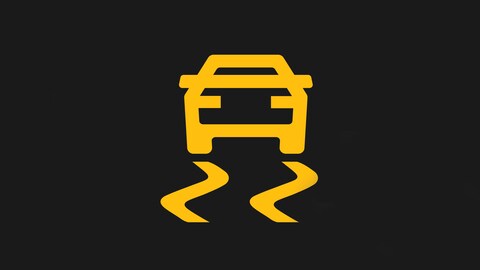
What is Traction Control?
Traction control is an active vehicle safety feature designed to assist vehicles by helping them make effective use of all the traction available on the road when accelerating on low-friction road surfaces.
When a vehicle without traction control attempts to accelerate on a slippery surface like ice, snow, or loose gravel, the wheels are liable to slip, which means the tires will spin quickly on the road without gaining any traction, which means the vehicle will not accelerate. A vehicle with traction control activates when it senses that the wheels may slip, helping drivers make the most of the traction that is available on the road surface. Of course, traction control has its limits; it can’t perform miracles. For example, if your car is operating on a frictionless surface, like a street that has a slayer of ice over it, vehicles with traction control won’t do better than a vehicle without.
How Does Traction Control Work and Why is it Useful?
Under most circumstances, traction control will help a driver accelerate their vehicle on low-friction, or slippery, surfaces, including roads that are wet or moderately icy, or those that are uneven, loose or badly maintained.
Traction Control is especially helpful in the following instances:
- When accelerating up a hill where the surface is loose and gravelly.
- Hitting a patch of slushy road that causes the vehicle to slow down as the wheels lose traction.
- Accelerating at a green light on an icy road with traffic approaching from behind.
Traction Control works in a similar way to anti-lock braking systems (ABS). In fact, Traction Control systems are often considered a supplement to ABS systems. As a matter of fact, traction control uses many of the same components as ABS, including:
- Wheel speed sensors monitor the speed of rotation of either the two front wheels or all four wheels;
- A hydraulic modulator pumps the brakes, and;
- An electronic control unit (ECU) receives information from the wheel speed sensors and directs the hydraulic modulator to pump the brakes when necessary.
Modern ABS and Traction Control systems are set up with the same ECU and the hydraulic modulator attached together. While they have different functions, they are physically one unit. The ECU continually monitors the wheels, to see if some are spinning faster than others. That indicates that the wheel that is spinning faster is losing traction.
Whenever the ECU detects impending wheel slippage, it directs the hydraulic modulator to pump the brake, which means it applies and releases the brake to the problem wheel, so as to reduce its rotation speed. Some traction control systems will also reduce engine power to any wheels it detects are about to slip. Once the wheel has regained traction, the system returns to monitoring wheel speed and comparing the rotational speed of the vehicle’s wheels. In some cases, when a vehicle uses reduced engine power to reduce wheel slippage, drivers may experience a pulsation of the gas pedal when Traction Control is active. That pulsation is normal, however, and such pulsing does not mean something is wrong with the Traction Control system.
How Effective is Traction Control at Keeping Passengers Safe?
Over the years, Traction Control systems have undergone numerous tests and most have shown that such systems are effective for reducing wheel slippage when accelerating in low-friction (slippery) conditions. This effect is most noticeable in four-wheel-drive vehicles than in front-wheel drive vehicles. Many f the same studies have found that Traction Control systems that reduce engine power to slipping wheels have shown better stability, but that brake-only systems seem to work best for improving acceleration performance in a vehicle.
Overall, so far, the measured effectiveness of traction control to reduce or prevent crashes and injuries is not well-documented. However, because Traction Control systems are often packaged along with ABS systems and electronic stability control (ESC), there is a lot of evidence suggesting that driving a vehicle equipped with all three results in a significant reduction in fatal crash risk; up to 50%.
What are the Limitations of Traction Control?
As noted earlier, Traction Control systems are not at all perfect. Like most other auto safety features, getting the full benefit from a Traction Control system depends on driver interaction, which means driving safely and defensively, and only in road conditions in which you feel safe. Drivers who speed regularly, or who engage in any sort of aggressive driving tend to work against the benefits of Traction Control.
For instance, even if you have Traction Control, driving too fast for the road conditions will still increase the risk of a crash. That is because Traction Control is not designed to reduce stopping distance. In addition, if you, as a driver, tend to always drive fast, you may not experience an appropriate reduction in speed where necessary.
Overall, the purpose of safety devices like Traction Control systems is undermined if a driver isn’t inclined to drive safely. It is always important to focus on the important task of driving. Driving carefully is essential to making sure all safety devices work as they should. Safe driving practices, including driving with caution and exercising sound driving judgment are all essential elements to making sure devices like Traction Control systems actually keep everyone safer.
